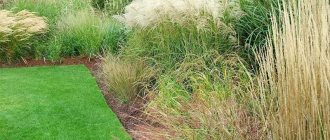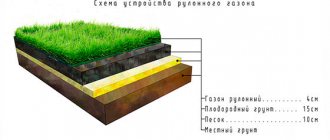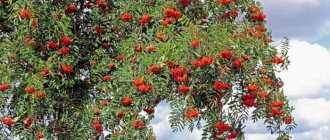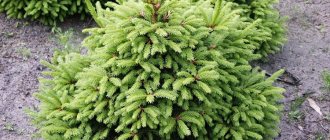Maiden grape is a fast-growing five-leafed vine from the grape family, native to North America. In nature, it reaches a length of 30 meters and, using branches with peculiar suction cups at the ends, can easily climb even on smooth surfaces.
Reddish shoots, which change color to green as they ripen, look very decorative. This is why the Maiden Grape hedge is the envy of many homeowners.
Virgin grape variety Murorum
Introduction
Grape cultivation is not always carried out for agricultural or industrial purposes.
The liana with beautiful carved leaves looks very attractive. It is not for nothing that one of the traditional elements in wood carving is grape leaves. Many owners of private houses decorate their plots with decorative varieties of grapes, the berries of which are not eaten.
As a rule, wild varieties are used, but sometimes the site is decorated with cultivated species. There are many options for designing the territory, which should be discussed in more detail.
Staged planting
It is necessary to take into account many nuances in order to know how to plant grapes correctly. The onset of fruiting depends on a careful study of the stages.
At first, the instructions on how to plant grapes seem complicated. But having delved into the description, planting a crop will not be difficult.
Features of grapes as an element of landscape design
When choosing grapes for decorative purposes, you need to keep in mind its specific features:
- Height. The grapes grow quickly. You will have to frequently prune the shoots to maintain the created image of the site.
- Support. Grapes are not able to grow on their own; they need a supporting structure that should not stand out from the overall decor.
- Sun. A sufficient amount of sun is necessary for normal plant growth.
- Shelter. Some varieties will have to be pruned and covered in the fall in order to start decorating the site all over again in the spring.
Pros and cons of grapes as a design element
- The plant produces an abundant amount of green mass and has beautiful carved leaves.
- Thin and flexible vines can be bent in any direction, obtaining the desired trunk configuration;
- Fast and active growth allows you to get the expected result in 1-2 seasons.
- Maintaining the resulting image of the site is not easy; you will have to constantly adjust and trim the plants.
- When creating a landscaping project, first of all you will have to take into account the specifics of plants, and only then - design solutions.
- You will have to choose between the decorative appearance of the site and the practical benefits of the grapes.
Most gardeners try to harmoniously combine all the capabilities of plants, obtaining maximum benefit from them both in agricultural and artistic terms.
What grape varieties are suitable for decorating the site?
There are different categories of grape varieties:
Dining rooms
Technical
Universal
Kishmish
All these varieties are used for various purposes, but they are also quite suitable for decorating a site. Even if the owner does not intend to harvest, he may well use the decorative properties of the vine:
- ability to bend in any direction;
- the ability to weave any objects or structures;
- the presence of beautiful carved leaves forming a dense curtain.
The only requirement for most garden owners is the ability to easily withstand winter cold.
Only frost-resistant varieties that do not require shelter for the winter are suitable for landscaping.
This is an important point, since the vine that weaves around a gazebo or fence cannot be removed from its support and covered with something when cold weather sets in, and then placed again in its place.
It is noteworthy that many gardeners combine the decorative and applied properties of grapes. They place plants on fences, use canopies and gazebos, and other structures as support.
At the same time, the plants are pruned in a timely manner, the crown is formed, and all conditions are created for normal fruiting. In addition to its useful qualities, grapes decorate the area, which adds value to it and makes it an even more useful plant.
Among the hardy grape varieties suitable for planting as an element of landscape design are:
Saperavi Northern
Northern Shoulder
Potapenko-3
Muscat Golden
Alpha
There are enough suitable varieties, and if the region is southern and there are no severe frosts, you can use almost any option.
Care
Wild grapes are one of the most unpretentious plants. Caring for it does not take much time. Basically it comes down to formative pruning of excess shoots and fixing them in the required direction. Once a season, usually in April-May, sanitary pruning is carried out, all dry shoots are removed and nitrogen-containing fertilizers are applied to the soil. In the summer, as the soil compacts, loosening and weeding can be done.
As for watering, the vine only needs the water that the plant receives in the form of precipitation. If the summer is dry, then it is better to perform 3-4 irrigations.
In Russia, predominantly frost-resistant varieties of virgin grapes (triostrum and five-leaved) have become widespread - they do not require additional shelter for the winter. And even if the vine freezes in severe frosts, it will quickly recover due to the dormant buds.
Maiden grapes
This is an ornamental grape variety whose berries are not used for food. They are not harmful or poisonous, just tasteless - sour, very astringent. But this plant has been used in landscape design since the 17th century - at least descriptions of such plot decoration have been known since that time. Various names are known:
Maiden grapes
Wild grapes
virgin ivy
There are different species of this plant on the American continent, but in our conditions only two varieties can grow:
Five-leafed
Triacriminal (Vici grape, ivy)
Both species are fast-growing vines, the length of which reaches 20 m (for the tripointed variety) or 30 m (for the five-leaved variety). Maiden grapes are highly resilient.
Externally, girlish grapes look like a continuous covering of leaves, green in summer and scarlet in autumn. The liana is deciduous, sheds its green mass in the fall, overwinters on a support and again becomes covered with foliage with the onset of warm days.
Advantages and disadvantages
- Easily tolerates winter cold. He is not covered even at the latitude of St. Petersburg. At the same time, there are less frost-resistant varieties, for example, Murorum.
- Fast growth. The plant can weave an entire hedge, cover walls and even the roof of a house with a living carpet.
- Durable attachment to walls, tree trunks and other supports. The tendrils of maiden grapes have disc-shaped thickenings that act as suckers. The plant will not be thrown off its support even by the strongest gust of wind.
- High decorative qualities. Maiden grapes have no competitors in terms of growth rate and visual attractiveness; they grow well both in the sun and in the shade.
- Practical benefits. The living covering protects the walls from the scorching rays of the sun and sucks moisture from the soil near the foundation. In addition, the plant can be used to camouflage unattractive commercial buildings.
- Unpretentiousness. The plant does not require care, it just needs to be planted in the right place.
- Maiden grapes tend to spread throughout the territory, displacing other, less resistant plants. The berries, inedible for humans, are highly prized by birds, who unwittingly expand the living space for wild grapes.
- It is believed that the shoots of maiden grapes are capable of destroying the walls of houses and other structures. There is no consensus on this issue, but no one has yet been able to refute this point of view.
Some gardeners treat maiden grapes as a real disaster.
Expert opinion
Semyonova Klavdiya Leonidovna
49 years old, Dzhankoy, Crimea, experience in growing grapes - 10 years
“Not only does it eat into the walls, it also penetrates into all available cracks, becomes woody and begins to tear apart structures from the inside. If the girl’s grapes are not trimmed in a timely manner, you can get a lot of problems with the finishing and even with the supporting structures.”
When choosing this plant to decorate a site or the walls of a house, you need to keep in mind its characteristics. Many gardeners, having read on the Internet the tempting slogan “Plant and forget!” They do not pay attention to the young shoots, which gradually begin to destroy the support.
Therefore, it is impossible to completely eliminate care and concern for the plant - this can lead to undesirable consequences.
Description
The plant belongs to the Vinogradov family and is found wild in many countries of the American continent, from Canada to Mexico, as well as in Asia. There are more than 10 species of vines, but only winter-hardy varieties have become established in our climate: five-leaved and tripointed (ivy-shaped).
Relaxation corner in the garden Source www.fermeru.pro
Maiden grape (breeders call it: parthenocissus) is a shrubby deciduous vine, which in natural conditions can stretch up to 15-25 m. It is helped to climb vertical surfaces by tendrils, often expanded in the form of suction cups. The leaves are a rich emerald green color and have a palmate-compound shape; the inflorescences are inconspicuous and have no decorative value.
At the entrance Source sadik.tomsk.ru
In autumn, with the onset of cold weather, the leaves acquire a rich crimson-red and burgundy color. At the same time, the fruits ripen - clusters of small blue-black berries. The fruits contain oxalic acid and are inedible for humans, but many birds like to feast on them in winter.
Fruits of wild grapes Source 7ogorod.ru
Several garden forms of five-leaf maiden grape are known. Among them, the fast-growing Engelmannii and Murorum stand out, densely weaving vertical surfaces thanks to their particularly tenacious tendrils.
On a stone wall Source chylanchik.ru
The Troki variety has an interesting appearance with its especially large leaves, and the Yellow Wall variety, whose leaves turn bright yellow with the onset of autumn. The Variegata variety is distinguished by its variegated color: the small leaves have a marbled or speckled white-green pattern.
Variety Variegata Source www.botanichka.ru
Wild grapes are propagated in several ways. In January and February, vine seeds are planted in separate pots to produce young shoots by spring. From April to October it is allowed to replant a plant with a measles system; To do this, the upper shoots are cut off, preserving a few leaves and buds. Cuttings are also possible, in which cuttings with 3-4 buds are placed in water, and after the formation of the root system in May-June they are planted in the ground.
Young plant Source landas.ru
Site design options
When choosing grapes as a decorative element, you need to immediately think about its purpose - whether it will be purely for decoration, or whether it is desirable to combine it with practical use, getting a harvest of berries from the plants. This determines what grape variety will be used and what structure will serve as a supporting structure.
If you only need to decorate the area, create an attractive decor for buildings or fences, the best option would be maiden grapes resting on the walls of the house, gazebos, fences or other types of supports.
To obtain a harvest, you will have to combine the decorative and practical qualities of plants. In such cases, trellises are usually made in the form of terraces, arches or canopies (pergolas).
These structures allow you to place the plants so that they are in normal conditions, well lit by the sun, and the bunches hang freely and do not encounter obstacles.
An important point will be the density of the plant - there are varieties that are not able to tightly braid the proposed support. If you need to create a dense green curtain - a hedge, the walls of a gazebo, or hide unattractive surfaces - you should choose denser decorative varieties (it is best to use varieties of maiden grapes).
When decorating a site, you can use two ways:
- Make special supports for grapes with the expectation that they will become overgrown with green mass. This will require a lot of effort, time and materials.
- Decorate existing structures or surfaces. this will require a minimum of costs - in the right places they strengthen the chain-link mesh or gratings from slats, which you can make with your own hands or purchase in a store.
Both options are good in their own way, but the final choice is made based on your own capabilities, both technical and financial.
Screens – walls of green rooms
An ordinary grape trellis in summer is a screen up to 2 m high and can divide the area into green rooms. True, after the leaves fall and pruning in the fall, little remains of it. Trellis for screens and walls can be decorative - in the form of a fence, a lattice made of wrought iron or wood.
Grapes are planted no closer than 0.8–1 m from the walls of the house. If the climate and topography allow, wine grape varieties in intensive trellis-free culture can be grown very closely: every 0.8–1 m in a row. Several vines (with not the most tempting berries) can be planted along fences.
Reviews from gardeners about the use of grapes for decorative purposes
Valery Alikhanov
Orenburg
Grapes alone will not give the same effect as a harmonious combination of all elements. When drawing up a project, you need to take into account all the little things, right down to the shape of the tiles on the paths. Otherwise, there will be a mismatch of details, some of them will stand out too much and “cover” other, important objects.rn
Arina Butkina
Pskov region
The main thing is not to overdo it with the amount of decor. I first planted a large number of bushes, thinking that the green area would be very beautiful. However, after a couple of years it was necessary to cut off the shoots of all the bushes, and some of them were completely removed. I recommend everyone to take into account the growth and increase in green mass of grapes.
Yuri Shipenok
Irkutsk
I decorated the area with girlish grapes, first one hedge, then I decided to also decorate a gazebo. Now it’s been 3 years since he’s been growing. So far I don’t see any problems, I’m cutting off the excess little by little, but without much difficulty, between times. Everything looks just as I planned.
Preparing the planting hole
A month before planting, they begin to prepare the pits. This is necessary so that the earth has time to settle. If holes are dug immediately before planting, the soil will subsequently settle and the bush will become deformed.
Thus, the plant will have slow development. Preparing a hole to properly plant grapes proceeds as follows:
- Dig a hole 0.8 m deep;
- the soil dug from the hole is divided into two parts - the upper dug layer and the lower one;
- the bottom of the pit is laid out with a drainage layer of crushed stone and gravel;
- preparing a soil mixture consisting of a top dug layer with 0.5 kg of superphosphate, 15 kg of humus and 1 kg of ash rich in minerals;
- Fill the cavity with the prepared mixture;
- a small layer of ordinary soil is poured on top to avoid burning the rhizome;
- 2-3 buckets of water are poured into the hole;
- The pit is left for three weeks or a month to compact and subsidence the soil.
Let's sum it up
Decorating a plot with grapes is not an original idea, but it is consistently attractive to almost all gardeners. From the technical side, there are no problems with this design.
The main difficulties arise in drawing up a decor project, since the rapid growth of plants does not allow the results to be preserved for a long time. However, if you make constant corrections, you can stabilize the design of the site and maintain it in the desired form.
Previous
Questions and answersGrapes and health: the benefits of berries, seeds and leaves for humans, possible negative consequences
Next
Growing and careAll about feeding grapes: fertilizers, equipment, seasonality
Benefits of growing the plant
Wild grapes have earned recognition from landscape designers around the world due to the following features:
- The liana clings and crawls up any vertical surface without additional support.
- The plant wonderfully decorates any space (be it a cottage or a park).
- With the help of grapes, gazebos, walls, rotundas, verandas, loggias, hedges, fences and even garden furniture are decorated. And the pergola, entwined with lush foliage, looks simply magnificent.
- Planting in courtyards and plots is carried out in various containers or in open ground.
- The soil composition is very simple - it is turf, humus, leaf soil and a little sand.
- If decoration is carried out on the facades of buildings, a favorable microclimate is formed under the patterned mosaic carpet, which improves living conditions in the premises themselves: increased air humidity, less dust, and lower temperatures in hot weather. This property is also very important for verandas.
- The spectacular appearance of the composition is maintained throughout the growing season.











